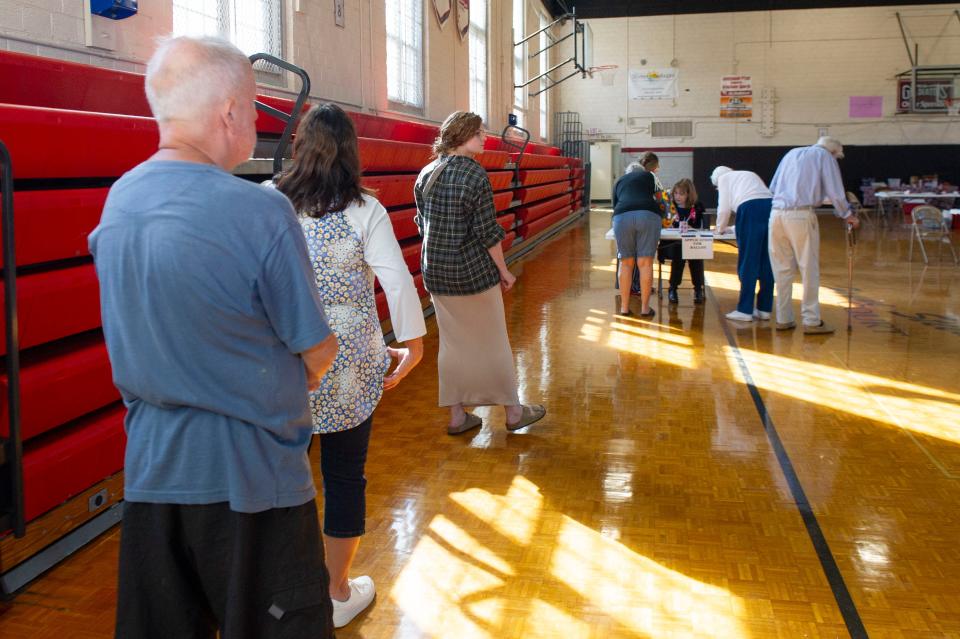Testing the trope about how food and gas prices influence voters | Opinion
We are entering the silly season of election coverage. Pontificators look at the landscape and deliver a political news trope, that food and gas prices are key motivating factors for voters. An incumbent president, for example, may be doing a good job on budgeting, unemployment and foreign policy, but if the price of milk is high, voters will turn to a challenger.
The same thing was said in the non-presidential year of 2022. Pundits argued that because prices were high, voters would turn to the “out party” and replace incumbents, especially in swing districts, creating a “wave” for Republicans. I have collected such conventional wisdom from an election preview piece for the New York Times business section; CNN political panelist Van Jones the day before the election; earlier pieces on CNN from Abby Phillip, Amara Walker and Kyung Lah; Fox News comments from Greg Gutfeld and Laura Ingraham, and guest Newt Gingrich; and Tom Bevan of RealClear Politics.

Results of Associated Press VoteCast survey
Rarely does anyone check on the validity of these tropes, so I did.
I analyzed The Associated Press VoteCast survey of 120,896 registered voters; it started Oct. 31, 2022, and concluded as polls closed on Election Day. The 2022 general election provided a good test. No president was on the ballot, but voters had to make choices in a post-pandemic time of relatively high prices. It also was an unusual time in which incumbents who had ignored an insurrection were on the ballot, and also a time immediately following a staggering Supreme Court decision overturning a recognized federal right to seek an abortion.
What's most important to Democrats and Republicans?
The VoteCast survey asked about the importance of each of the following: 1) the Supreme Court overturning Roe v. Wade, the 1973 decision on abortion; 2) inflation increasing prices for gas, groceries and other goods; 3) the future of democracy in this country; and 4) violent crime rates increasing from a few years ago. The answering options for each was: the single most important factor; an important factor, but not the most important; a minor factor; and not a factor.
Inflation proved to be important, but other factors were at play. A breakdown by party preference was instructive. Almost 39% of Democrats called abortion rights the single most important factor, compared to just 14% for Republicans. The gap was also pronounced for democracy (post-insurrection) as the single most important factor, 52.6% for Democrats versus just 35.5% for Republicans. Republicans by a wide margin over Democrats called inflation a top issue, 63.3% versus 35%. Crime, despite Fox News' incessant attention to inner-city crimes, yielded scores of 26.2% for Republicans and 22.5% for Democrats.
The journalistic conventional wisdom of inflation being a predictive factor in elections did not hold true. In a post-pandemic time of inflation, Republicans did not get the anticipated “red wave.” Democrats held the U.S. Senate and added one seat to their slim majority. Republicans did get a very narrow majority in the U.S. House, but that proved to be more of a “red trickle” more attributable to gerrymandering than to a pro-GOP shift.
Tentatively, one can see evidence that public sentiment may have traveled from party message planning to the electorate, rather than moving in the opposite direction. When compared to the overall sample, the group naming food inflation a top issue mirrored a Republican profile. Members were more likely to be male and white, attend church once or more a week, consider themselves born again or evangelical, describe themselves as somewhat or very conservative, and be 58 and older.
The 2022 election did some damage to the idea that inflation is an albatross around the neck of incumbents regardless of other issues. This bit of conventional wisdom did not work out in either the election results or the AP VoteCast survey that gave us clues to voter motivations. Sometimes conventional wisdom is not particularly wise.
Now that we are well into 2024, let’s not repeat the punditry mistakes of 2022. Inflation has eased since then and a lot of economic indicators are doing well. Nevertheless, some pundits cling to the trope by saying “voters aren’t feeling it yet.” The Republicans have shifted their attempt to influence the agenda by feeding fear about the Southern border. The more reasonable extrapolation for 2024 is that Democrats will talk democracy and abortion rights; Republicans will talk border security. “Roe rage” remains real, as is fear of Donald Trump’s authoritarian rants. Those issues will play out in predictable partisan manners.
Mark D. Harmon is a professor of journalism and media at the University of Tennessee.
This article originally appeared on Knoxville News Sentinel: Testing the trope about how food, gas prices motivate voters | Opinion

